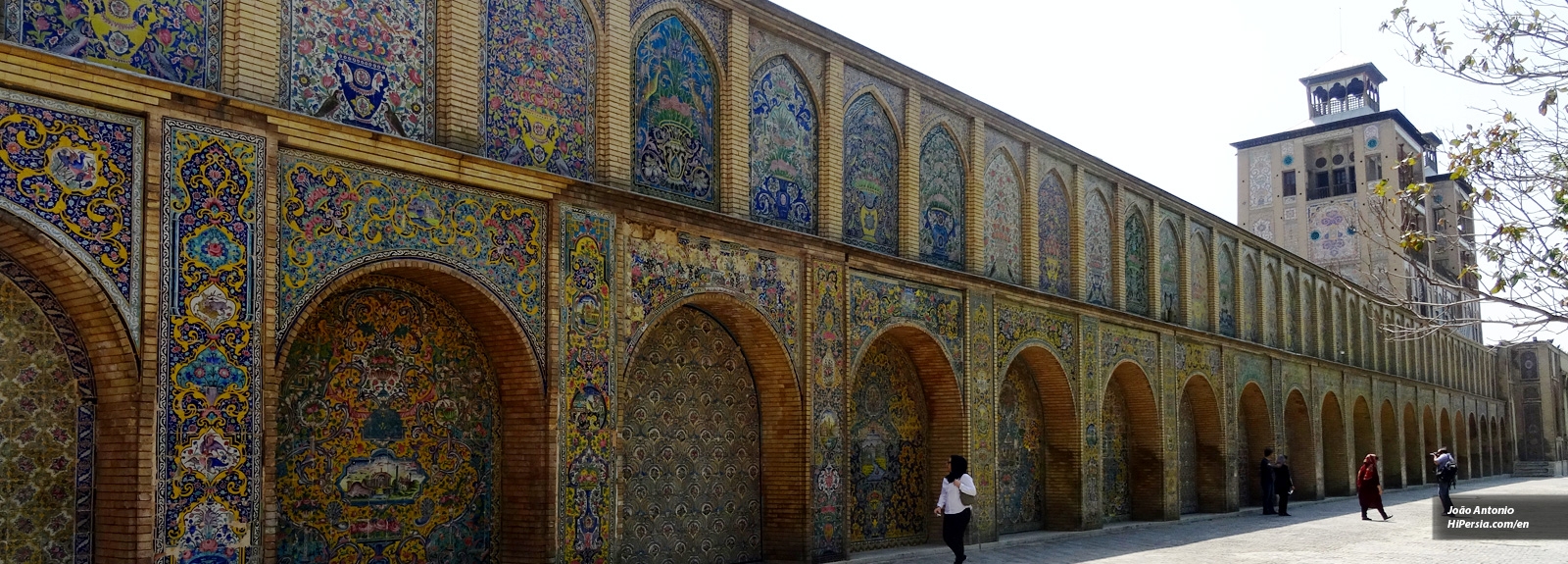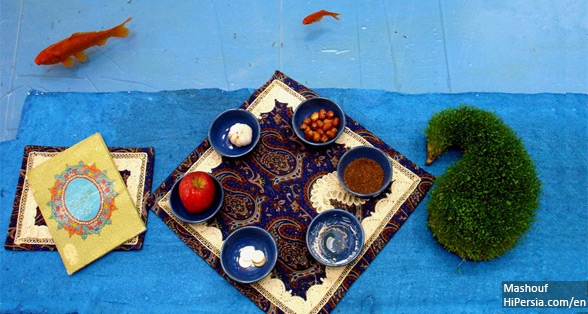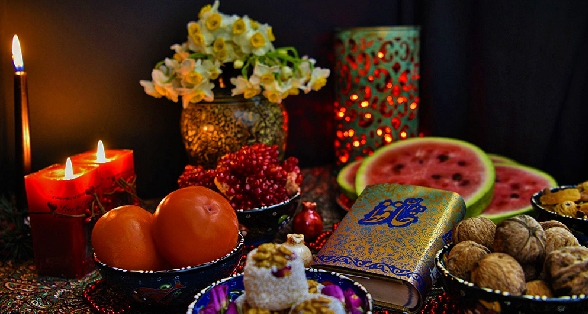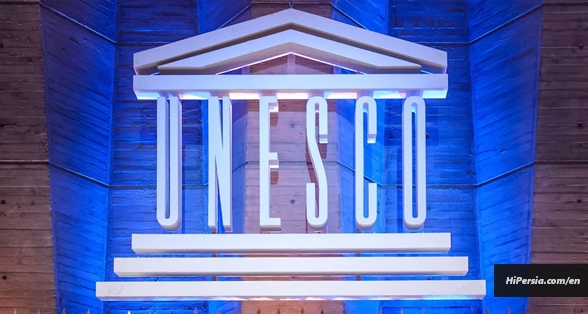




Golestan Palace, located in the heart of Tehran, consists of a very magnificent palace complex. If you are looking for calm in this ruckus of Tehran and visiting the history of this big city, it is better to go to the Palace of Golestan.
Golestan Palace, dating to more than 440 years, is one of the most exclusive historical collections in Iran. The construction of this building began from the time of Abbas the Great, and it was changing and completing until the Qajar dynasty and Naser al-Din Shah Qajar, which this Changes influenced by its European his travels. Historically, this building witnessed so significant events such as the Constitutional Revolution and the coronation of Pahlavi I and II.

This collection has hosted kings for many years, such as Agha Mohammad Khan Qajar, Fath-Ali Shah Qajar, Mohammad Shah Qajar, Naser al-Din Shah Qajar, Mozaffar ad-Din Shah Qajar, Mohammad Ali Shah Qajar and Ahmad Shah Qajar who lived in Golestan Palace.
In the yard of the palace, from the colorful tiles to water dancing to the pool and all passages, everything can all pay attention to you.

The great and impressive building is mentioned as one of the most prominent buildings in the Golestan Palace and the most famous building on the eastern side of the complex. It built on the order of Nasir al-Din Shah Qajar in 1282. The architecture of this monument is derived from European monuments. Shams al-Amareh was the first building used metal for construction, and this was also development in building construction.
This part is the oldest part of the Golestan Palace, which was built at the time of Karim Khan Zand. The Takht-e Marmar (marble bed) is the place where the "Salam" and "Baraam" ceremonies held in front of it. The "Salam" ceremony is a ritual ceremony with the presence of princes and officials who held various occasions during the Qajar period, such as Nowruz. At the "Baraam" ceremony, the king and courtiers also allowed a group of people to meet with them. The building of this mansion has undergone two main changes. The first change was during the time of Agha Mohammad Khan Qajar and another one was during Naser al-Din Shah Qajar. There is a marble bed in this building, which ordered to Fath-Ali Shah in 1221 AH.

In the northwest of Golestan, the covered building in the form of a three-gaps porch and has elated pillars. In the middle of this part, there is a pond that the water of the count of the king came out of it and flowed in the royal gardens in the past. This building is famous in two points; First, the date of construction of the building dates back to Karim Khan's time and the second, due to the brutal behavior of Agha Mohammad Khan Qajar with the dead bones of Karim Khan Zand in this place. The founder of the Qajar dynasty in 1206 AH, bringing out body remnants of Karim Khan Zand from the soil of Shiraz and transferred to Tehran. He buried these bones underneath the steps of Karim Khani. At that time, Karim Khani was the king's daily passageway, and he has kicked off this place and was getting a good feeling!
One of the most beautiful parts of the palace is the following:
This section of the hall created a museum with the aim of creating a museum and called the museum room. It was built on the orders of Nasir al-Din Shah and imitated from European museums. Hereafter, the museum room, also known as the Salam Hall. Because of the Salam of the ceremony held there.

This hall created at the same time as the museum room. At first, this section dedicated to the location of the Peacock Throne and Kiani Crown.

Space is used in the summer and usually has an octagon shape. Mahmoud Khan Molk Al-Shoara's watercolor paintings from the Outside hall layout mounted in this section.
The hall of Zoruf is a part that built in 1344 on the remains of the Qajar dynasty and in this place, some of the gifts of the European sultans to the Qajar kings were shown.
Bryllian Hall
There are a lot of halls and elegant rooms, with a lot of mirror work, Chelcheraghs, and various lobbies. Before the Bryllian Hall built here, the palace or hall of the crystal was at this place, which was considered to be the buildings of the Fath Ali Shah era. At the time of Nasir al-Din Shah, this hall built due to exhaustion and destruction, and instead of that hall built Bryllian Hall. At the time of Nasir al-Din Shah, this hall was the palace of the preservation of gifts from kings of foreign governments. At the time of Pahlavi, it became the official hosting place for the court.
This building built at the time of Fath Ali Shah, but at the time of Nasir al-Din Shah, this place main changes. Paintings, works mirrors, tore, woodcarving and marble used throughout the mansion. For this reason, it was considered one of the most spectacular buildings of the Royal Citadel at that time.
At the end of the reign of Nasir al-Din Shah, Sultan Abdul Hamid, the Ottoman king, sent some expensive furniture to the Shah of Iran. All the Golestan halls and palaces filled with furniture at that time. Therefore Nasser-al-Din Shah decides to build a palace for this furniture.
The foundation of this hall dates back to the time of Fath Ali Shah, but Nasir al-Din Shah has changed its appearance and decorations. The interior mirror of the building has given it the name of the diamond. Under this hall, they built a large basement.
The Visit schedule of The Golestan Palace collection is for spring and summer from 9:30 to 18:30 (ticket sales in the first six months of the year until 17:30). In the fall and winter from 9:00 to 16:30 (ticket sales in the second half of the year are 16). The total ticket price for foreign nationals is 1020000 Rials. Of course, you can buy several tickets for your choice. On the official holiday days for martyrdom and on the Sizdah Be-dar day, this palace is closed.
To go to Golestan Palace, use to subway stations of 15th Khordad Square and Imam Khomeini square. Bus terminals of Imam Khomeini Square are also available for this purpose.











